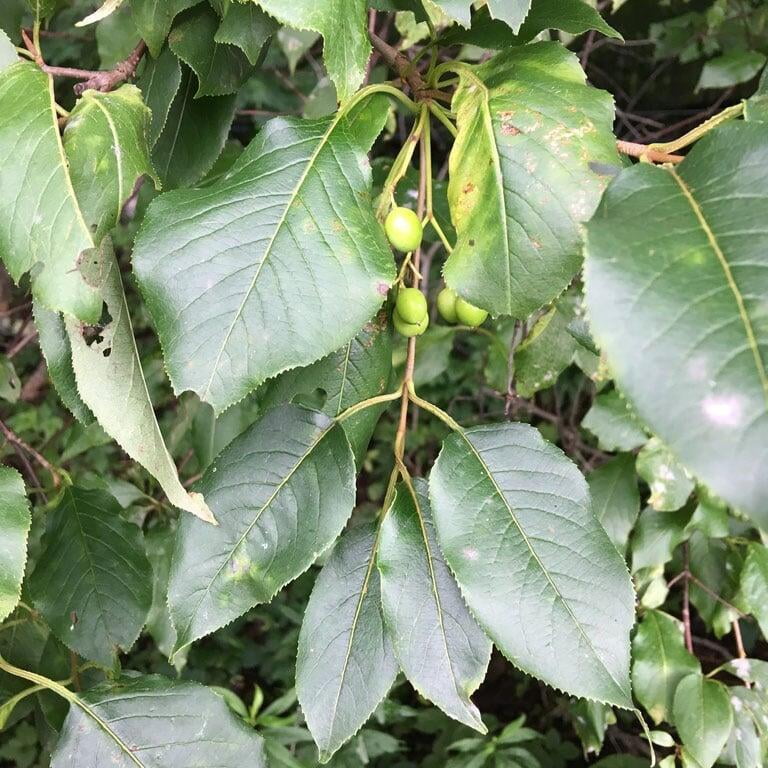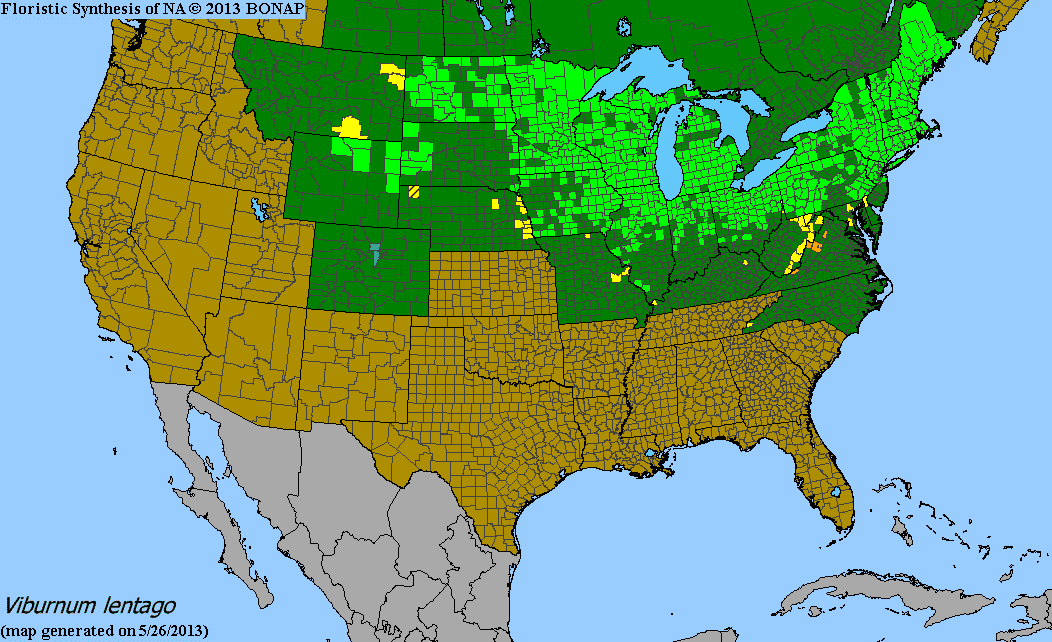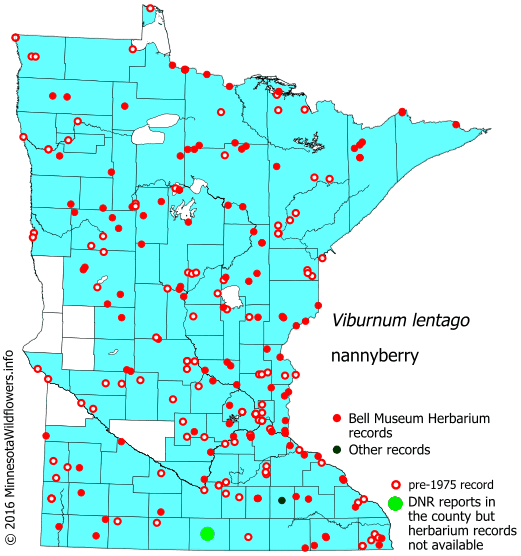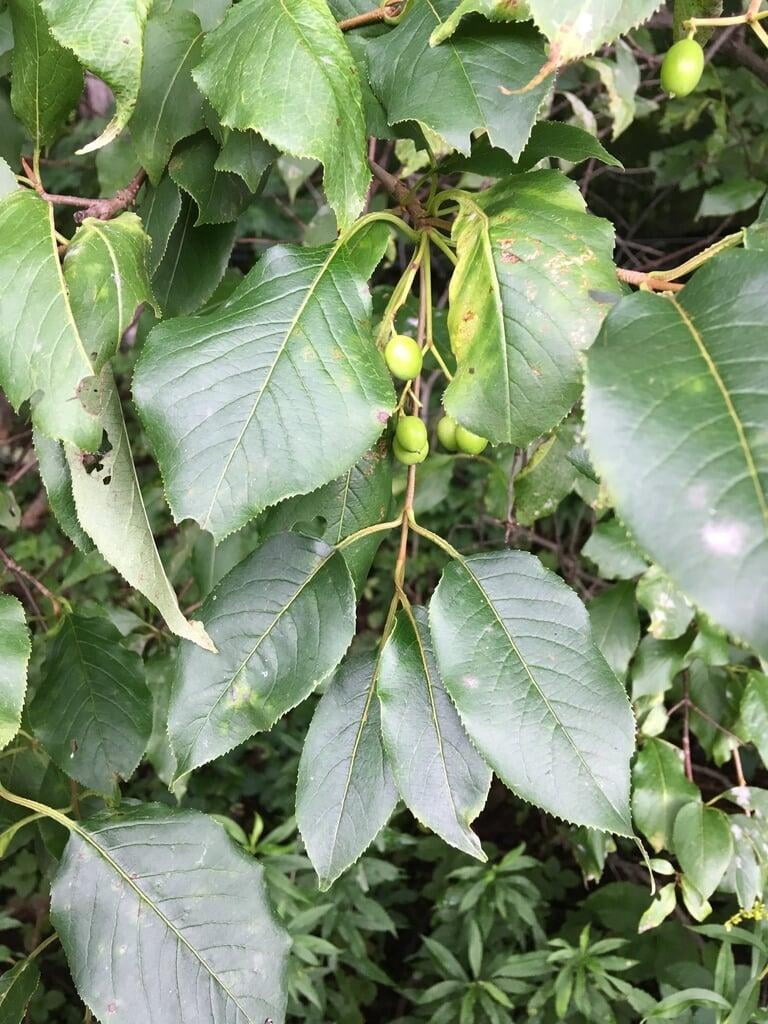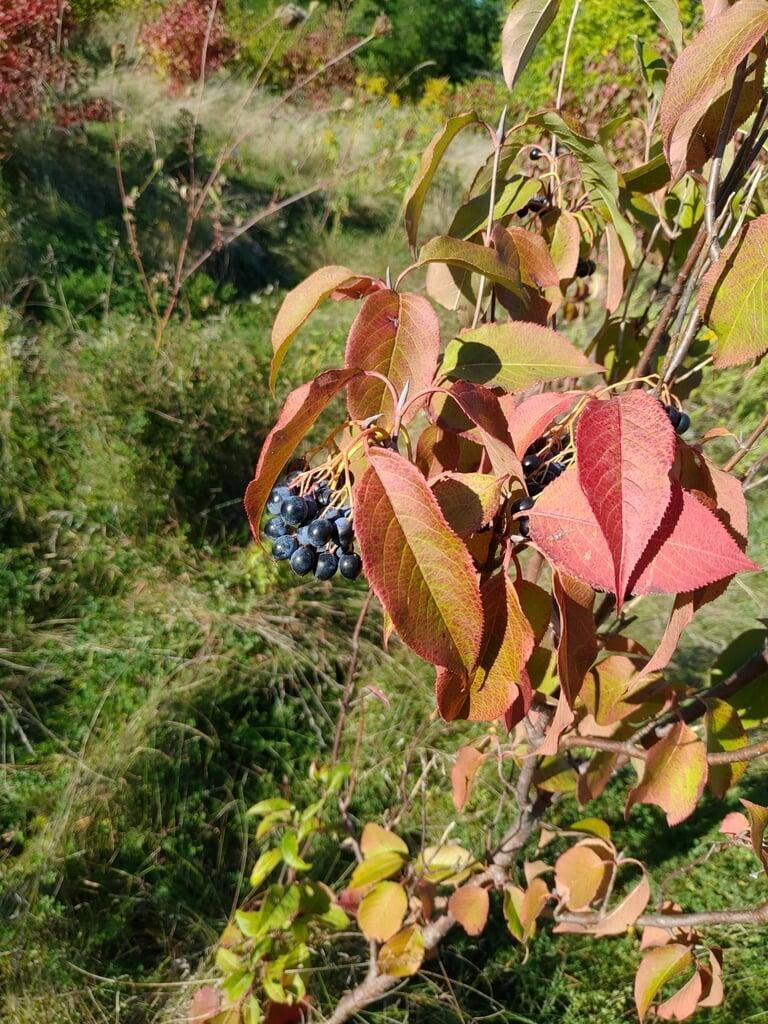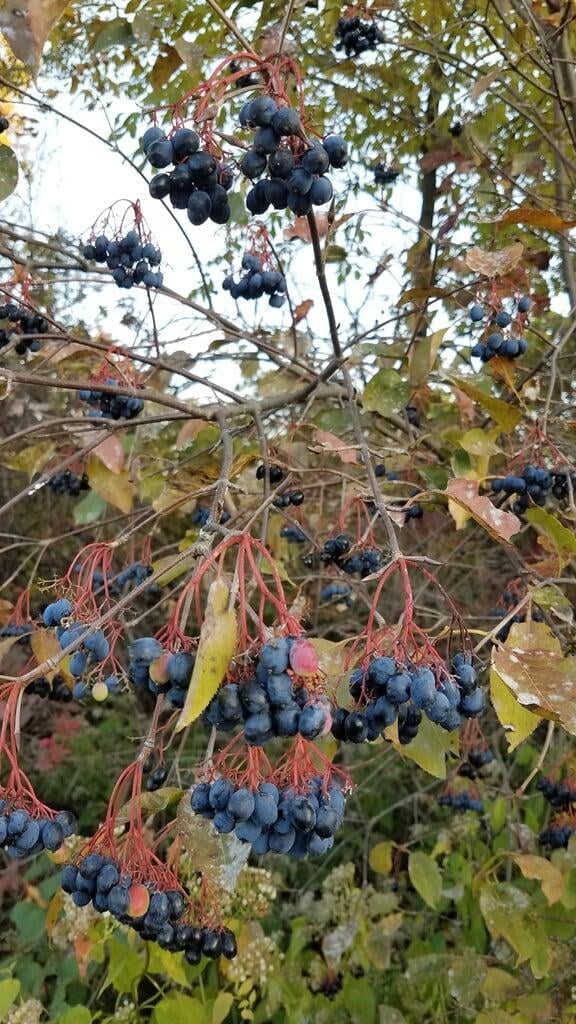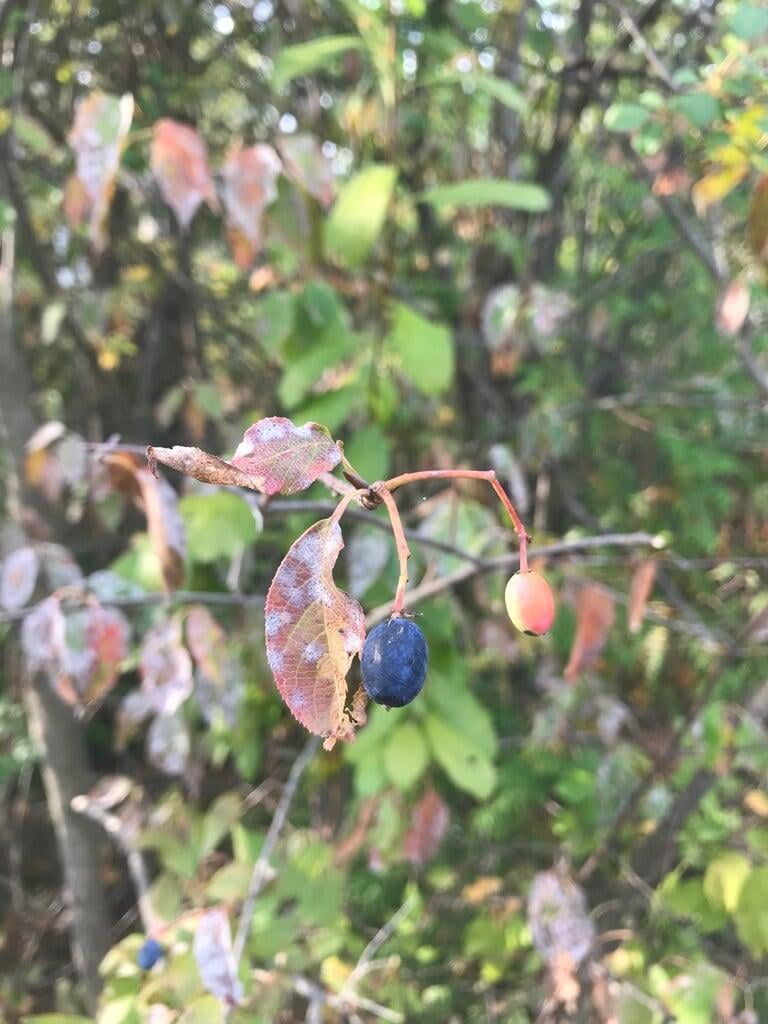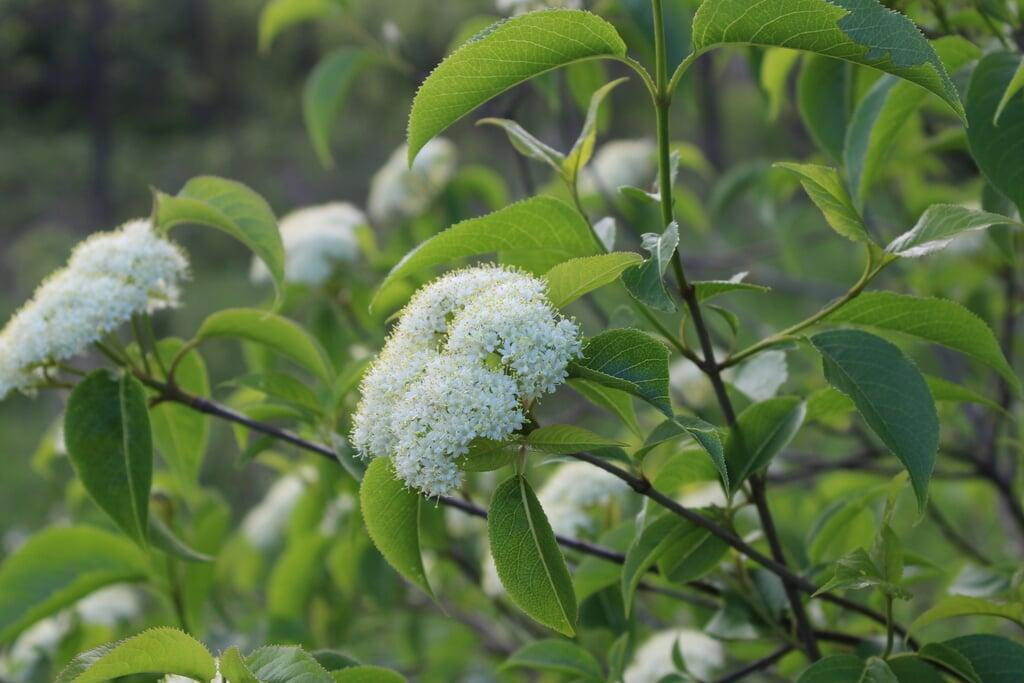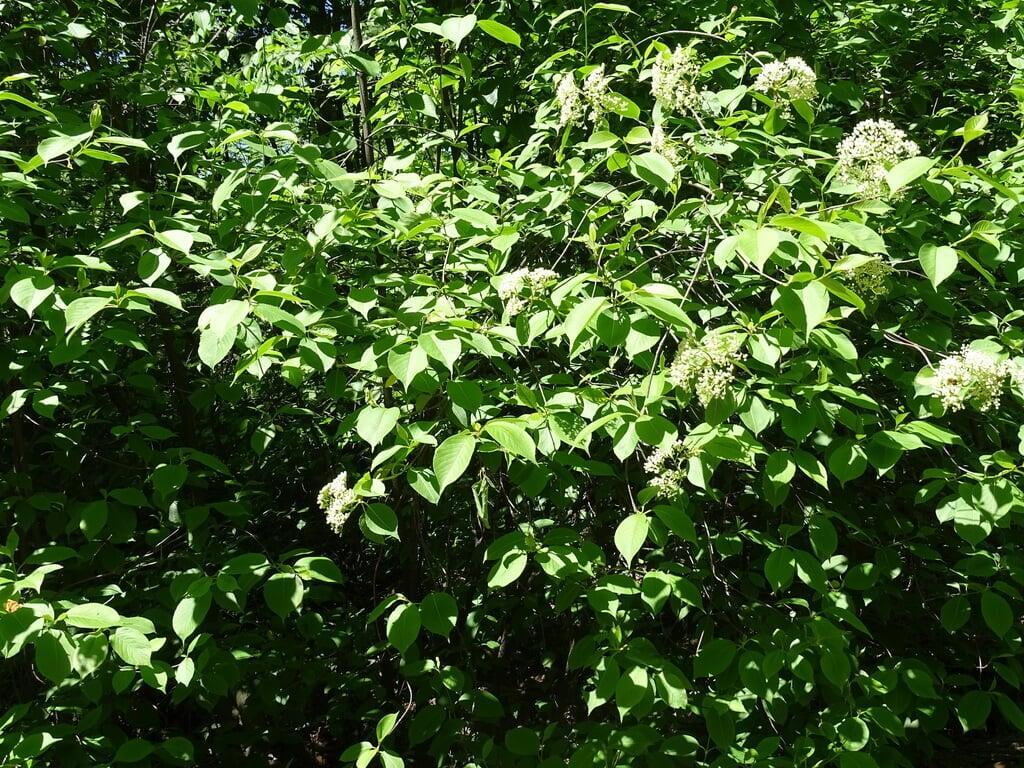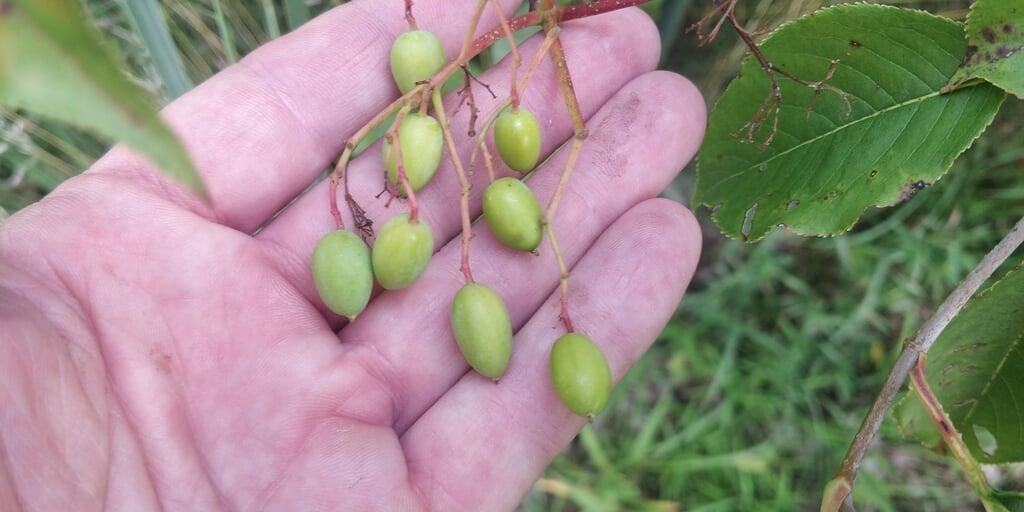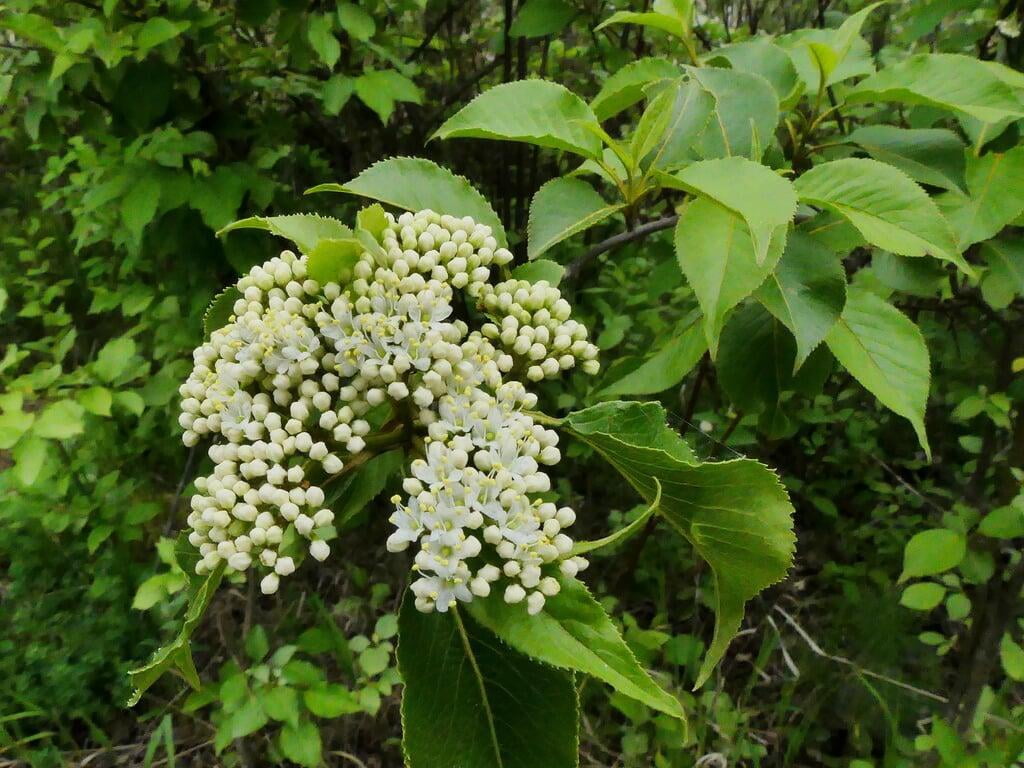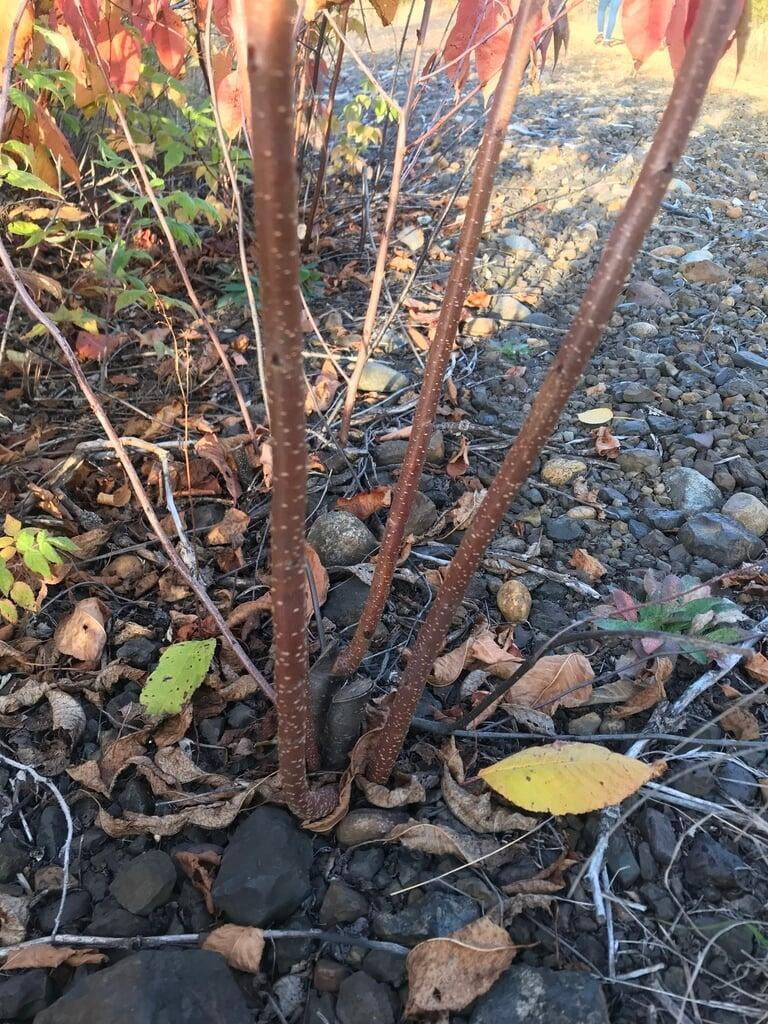Viburnum lentago
Nannyberry description:
Viburnum lentago, also known as the nannyberry, is a deciduous shrub that can grow up to 25 feet tall and 15 feet wide. It is native to North America and is commonly found in wooded areas, wetlands, and along stream banks. The plant is known for its clusters of creamy white flowers in the spring, which give way to edible berries that are dark blue-black in color and about 1/4 inch in diameter. The berries are sweet and can be eaten fresh or used to make jams and jellies.
The leaves of Viburnum lentago are oval-shaped, about 2 to 4 inches long, and turn a beautiful reddish-purple color in the fall. The bark of the plant is grayish-brown and smooth when young, but develops shallow grooves and fissures as it ages. Viburnum lentago is a hardy plant that can tolerate a wide range of soil types, from well-drained sandy soils to heavy clay soils, and can grow in full sun or partial shade. It is also relatively drought-tolerant once established.
In addition to its ornamental value, Viburnum lentago has a number of practical uses. The berries are high in antioxidants and can be used to make a variety of health products, such as supplements and teas. The plant also has medicinal properties and has been used traditionally to treat a variety of ailments, including colds, fevers, and respiratory infections. Overall, Viburnum lentago is a versatile and beautiful plant that can add both aesthetic and functional value to any landscape.
Native Range:
Nannyberry can be found growing natively in the United States from Wyoming in the West to Maine in the East. Its range extends South to North Carolina and Missouri.
Standard Plant Information:
Plant Height: 10-25'
Bloom time: April - June
Preferred Habitat: Does well in part shade to full sun with moist soil. Often found in hardwood forest openings, swamps, wet meadows, and shorelines.
Planting:
Planting a tree/shrub seedling or small potted tree/shrub properly is important to ensure its healthy growth and development. Here are the steps you can follow to plant a tree:
Choose the right spot: Select a spot with adequate sunlight, water, and soil drainage. Make sure the tree has enough space to grow to its full size without interfering with other plants, structures, or utility lines.
Prepare the soil: Dig a hole that is twice as wide and slightly shallower than the root ball of the seedling. Remove weeds or debris from the area. Loosen the soil around the edges of the hole to help the roots grow more easily.
Plant the seedling: Place the seedling in the hole, making sure the top of the root ball is level with the ground surface. Gently spread out the roots and fill in the hole with soil, tamping it down lightly as you go.
Water the seedling: Water the tree/shrub deeply and thoroughly after planting, making sure the soil is evenly moist. This will help settle the soil around the roots and eliminate any air pockets.
Monitor the growth: Keep an eye on the seedling to make sure it is getting enough water and sunlight, and that it is not being attacked by pests or diseases. Prune any damaged or dead branches as necessary, and provide support if needed.
By following these steps, you can help ensure the healthy growth and development of your newly planted tree/shrub seedling.

